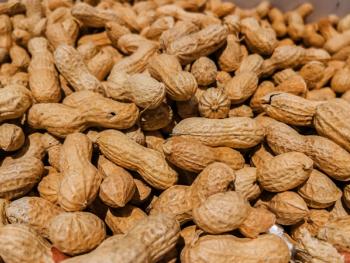
Using ICP-OES and Mass Spectrometry to Determine the Geographical Origin of Chinese and Korean Red Pepper Paste
A recent study from Korea examined how inductively coupled plasma–optical emission spectroscopy (ICP-OES) and mass spectrometry (MS) to determine the geographical origin of red pepper paste.
Inductively coupled plasma–optical emission spectroscopy (ICP-OES) and mass spectrometry (MS) can be used to accurately and effectively determine the geographical origin of red pepper paste, an ingredient used in many Korean foods, according to a recent study published in Chemical and Biological Technologies in Agriculture (1).
Red pepper paste, known locally as gochujang, is a ubiquitous ingredient in Korean food, cherished for its unique flavor and nutritional benefits (1). Given the high value and widespread use of red pepper paste, accurately determining its origin is crucial for ensuring product authenticity and consumer trust. Previous studies have focused on identifying the geographical origin of red peppers themselves using various methods such as inorganic elemental analysis (1). There have also been studies using discriminant models to determine the geographical origin of many other food products, including maize and rice seeds (2,3). However, until now, there has been a notable lack of research on red pepper pastes.
Ho Jin Kim from the National Agricultural Products Quality Management Service explored this topic with his research team. The research Kim and his team conducted underscored the importance of the agricultural sector, and how analytical techniques such as ICP-OES and MS could be utilized in the food and beverage industry to ensure consumers get the right information regarding product origins.
In their study, Kim and his team used ICP-OES and ICP-MS to determine the inorganic elements present in red pepper pastes. Their findings revealed that the limit of detection (LOD) for ICP-OES ranged from 0.006 to 0.531 mg/kg, whereas the limit of quantification (LOQ) spanned from 0.017 to 1.593 mg/kg (1). For ICP-MS, the LOD and LOQ were in the ranges of 0.001–1.553 μg/kg and 0.002–5.176 μg/kg, respectively (1).
Various elements were analyzed in this study. These elements included calcium (Ca), potassium (K), magnesium (Mg), sodium (Na), phosphorus (P), sulfur (S), chromium (Cr), manganese (Mn), cobalt (Co), nickel (Ni), copper (Cu), gallium (Ga), arsenic (As), strontium (Sr), zirconium (Zr), molybdenum (Mo), palladium (Pd), cadmium (Cd), tin (Sn), antimony (Sb), cerium (Ce), platinum (Pt), lead (Pb), and uranium (U) in Korean red pepper paste (1). Their analysis demonstrated that all the employed discrimination models could distinctly differentiate between Korean and Chinese red pepper pastes.
The research team tested several models. Out of the four, canonical discriminant analysis (CDA) was the most accurate. CDA achieved 100% accuracy in distinguishing the geographical origin of red pepper pastes.
Although the study focused on red pepper paste, the work conducted here can be applied to other agricultural products. By employing ICP-OES and ICP-MS analyses in combination with advanced statistical models, it is possible to mitigate issues related to the misinformation of agricultural product origins (1). This approach can significantly enhance consumer protection, ensuring that customers receive authentic food products and are protected from fraudulent claims (1). Such advancements are critical in an era where globalization and complex supply chains can sometimes obscure the provenance of food items.
By leveraging sophisticated analytical techniques and rigorous statistical models, the research not only could be used to protect the integrity of Korean red pepper paste, but it also sets a precedent for other food products. As the agricultural industry continues to evolve, ensuring product authenticity will continue to be a top priority for maintaining consumer trust and safeguarding the agricultural economy.
References
(1) Hur, S. H.; Jeon, H.-J.; Lee, J. H.; et al. Discrimination of Geographical Origin of Korean and Chinese Red Pepper Paste via Inductively Coupled Plasma Atomic Emission Spectroscopy and Mass Spectrometry. Chem. Biol. Technol. Agric. 2024, 11, 49. DOI:
(2) Zhao, Y. Y.; Zhu, S. S.; Zhang, C.; et al. Application of Hyperspectral Imaging and Chemometrics for Variety Classification of Maize Seeds. Rsc Adv. 2018, 8, 1337–1345. DOI:
(3) Fabiyi, S. D.; Vu, H.; Tachtatzis, C.; et al. Varietal Classification of Rice Seeds Using RGB and Hyperspectral Images. IEEE Access 2020, 8, 22493–22505. DOI:
Newsletter
Get essential updates on the latest spectroscopy technologies, regulatory standards, and best practices—subscribe today to Spectroscopy.





